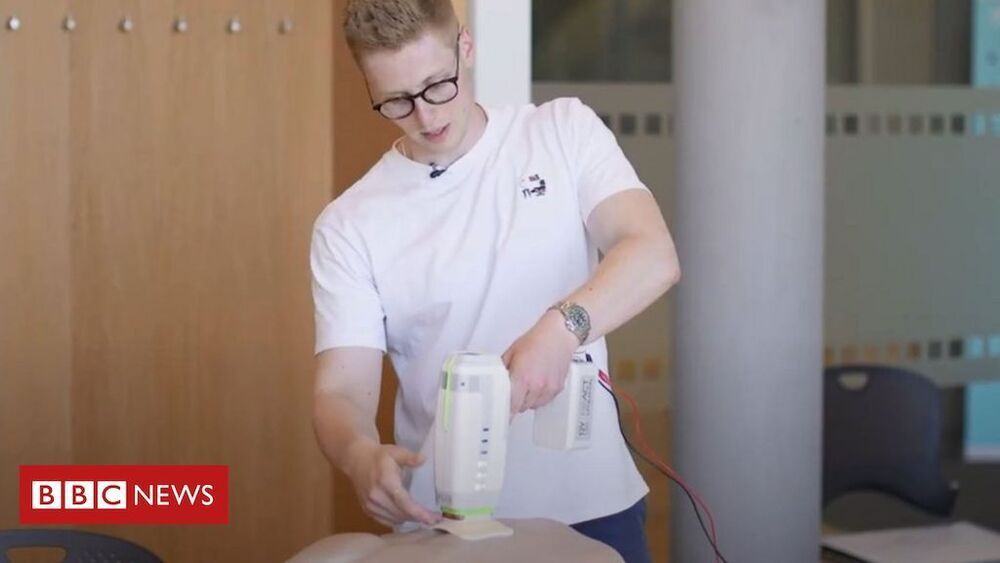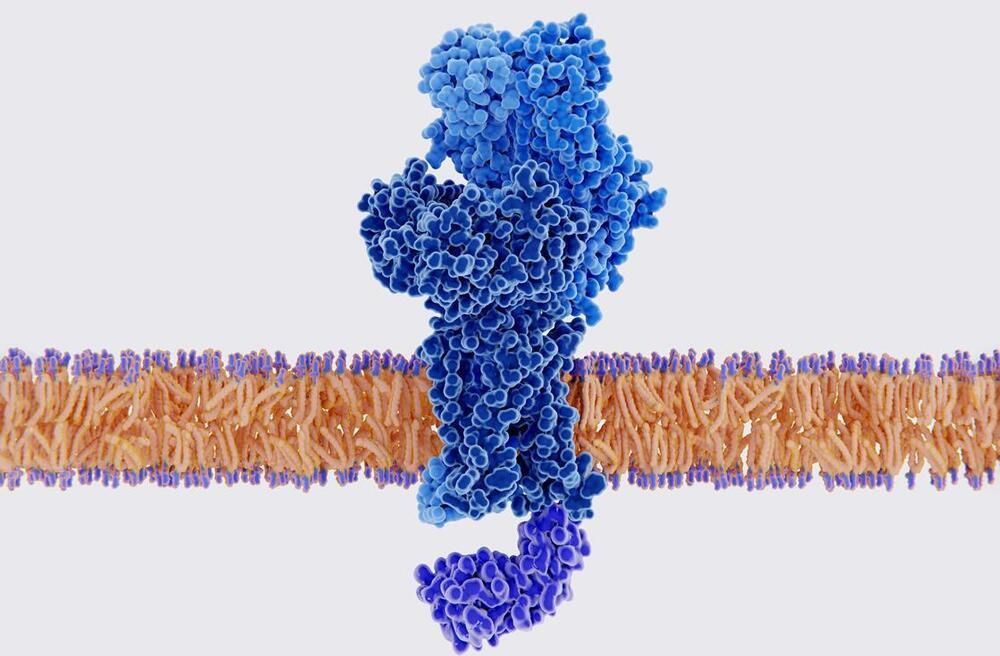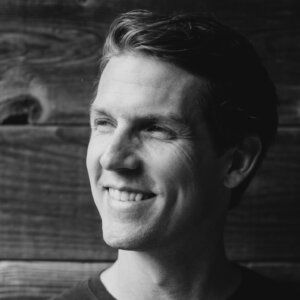Joseph Bentley, 22, hopes the REACT device will save “hundreds of lives a year”.


The Gist: They think they can start wider human trials soon which would last 2 years then have a product in 3 to 4 years.
In this video, Drs Irina and Mike Conboy talk how TPE, therapeutic plasma exchange is already available as an FDA approved procedure and the plans to extend the usage to include more age related diseases. We also discuss the company that they have formed IMU
Our guests today are Drs. Irina and Michael Conboy of the Department of Bioengineering at the University of California Berkeley. their discovery of the rejuvenating effects of young blood through parabiosis in a seminal paper published in Nature in 2005 paved the way for a thriving field of rejuvenation biology. The Conboy lab currently focuses on broad rejuvenation of tissue maintenance and repair, stem cell niche engineering, elucidating the mechanisms underlying muscle stem cell aging, directed organogenesis, and making CRISPR a therapeutic reality.
Papers mentioned in this video.
Plasma dilution improves cognition and attenuates neuroinflammation in old mice.
https://pubmed.ncbi.nlm.nih.gov/33191466/
Rejuvenation of three germ layers tissues by exchanging old blood plasma with saline-albumin.
https://pubmed.ncbi.nlm.nih.gov/32474458/
Rejuvenation of aged progenitor cells by exposure to a young systemic environment.
https://pubmed.ncbi.nlm.nih.gov/15716955/
************************************************************

Did you know that life extension is impossible? I didn’t until the keen minds over at the Guardian informed me as such. Fortunately before I decided to give up my career in regenerative medicine I decided to look into exactly how the Guardian came to such a revelation. What I discovered was so earth shattering that it rocked my very understanding of the world, and made me question everything I thought I knew. That realisation was that, despite their consistent insistence to the contrary, the media lies, a lot.
Ok maybe this was not as shocking as I made it out to be, in fact it’s pretty widely known by now that the media is generally no stranger to the odd lie here and there. If you are not familiar with the story allow me to give you a recap. A recent study was conducted in order to find out if human lifespans have actually increased due to advanced in medicine. To do this, scientists used statistical models to remove non-age related causes of death from historical records (such as murder, death in child birth, plague etc) in order to determine what the uninterrupted human lifespan is, and if it has increased over time. What was found is that our medical science is yet to fundamentally extend human lifespan. This comes as no surprise to anyone in the field of longevity research as we know full well that none of our current medical treatments address causes of ageing. What this study does not conclude however is that life extension is impossible.
It appears your susceptibility to a virus, and also the intensity of the viral load that goes on to attack if your defences are breached, are inextricably linked to your sleep quality and circadian clock.

For the first time, an artificial molecular motor has been created that can ‘talk’ to living cells – by gently pulling their surface with enough physical force to elicit a biochemical response. The approach could help scientists decode the language that cells use to communicate with each other in tissues.
‘There is a mechanical language in the form of physical forces applied by the cells themselves, and we want to understand what information is communicated and what the consequences are,’ explains Aránzazu del Campo, who led the study at the Leibniz Institute for New Materials, Germany. ‘Ultimately, we want to be able to provide signals to cells and guide their function when they are not able to do that by themselves in disease cases.’
Usually, studying how cells communicate by sensing mechanical stimuli and producing biochemical responses requires prodding them with pipettes or the tip of an atomic force microscope. However, this doesn’t work at the more complex tissue level.
US$8.5 Billion In Funding — 150+ Projects
Dr. Maria Millan, MD, is the President and CEO of the California Institute for Regenerative Medicine (CIRM — https://www.cirm.ca.gov/), an organization that was created in 2004 when voters initially approved a state Proposition which allocated US$3 billion to fund this fascinating area of medicine, and which recently received an additional US$5.5 billion in renewed funding.
Dr. Millan is a physician-scientist who has devoted her career to treating and developing innovative solutions for children and adults with debilitating and life-threatening conditions.
After receiving her undergraduate degree from Duke University where she started her focus on immunology research, Dr. Millan obtained her MD degree and then went on to complete her surgical training and post-doctoral research at Harvard Medical School – Beth Israel Deaconess Medical Center.
After a transplant surgery fellowship at Stanford University School of Medicine, Dr. Millan began her academic career with a pediatric and adult transplant surgery practice. In parallel, she continued her bench research at Stanford and became associate professor and director of the Pediatric Organ Transplant Program.


As smart watches are increasingly able to monitor the vital signs of health, including what’s going on when we sleep, a problem has emerged: Those wearable, wireless devices are often disconnected from our body overnight, being charged at the bedside.
“Quality of sleep and its patterns contain a lot of important information about patients’ health conditions,” says Sunghoon Ivan Lee, assistant professor in the University of Massachusetts Amherst College of Information and Computer Sciences and director of the Advanced Human Health Analytics Laboratory.
But that information can’t be tracked on smartwatches if the wearable devices are being charged as users sleep, which prior research has shown is frequently the case. Lee adds, “The main reason users discontinue the long-term use of wearable devices is because they have to frequently charge the on–device battery.”

“People are just exhausted.”
As COVID-19 restrictions loosen across the United States, the hospitality industry — which was walloped by the pandemic — is experiencing a new challenge: too few workers available to address soaring demand for dining out.
A furious debate is underway over what’s behind the labor shortage, which is prompting restaurants to adapt by modernizing with kiosks and digital ordering. Many are biting the bullet and ponying up more in compensation just to attract employees.
“A lot of us are paying over time,” Laurie Thomas, executive director of the Golden State Restaurant Association, said in an interview with Yahoo Finance.